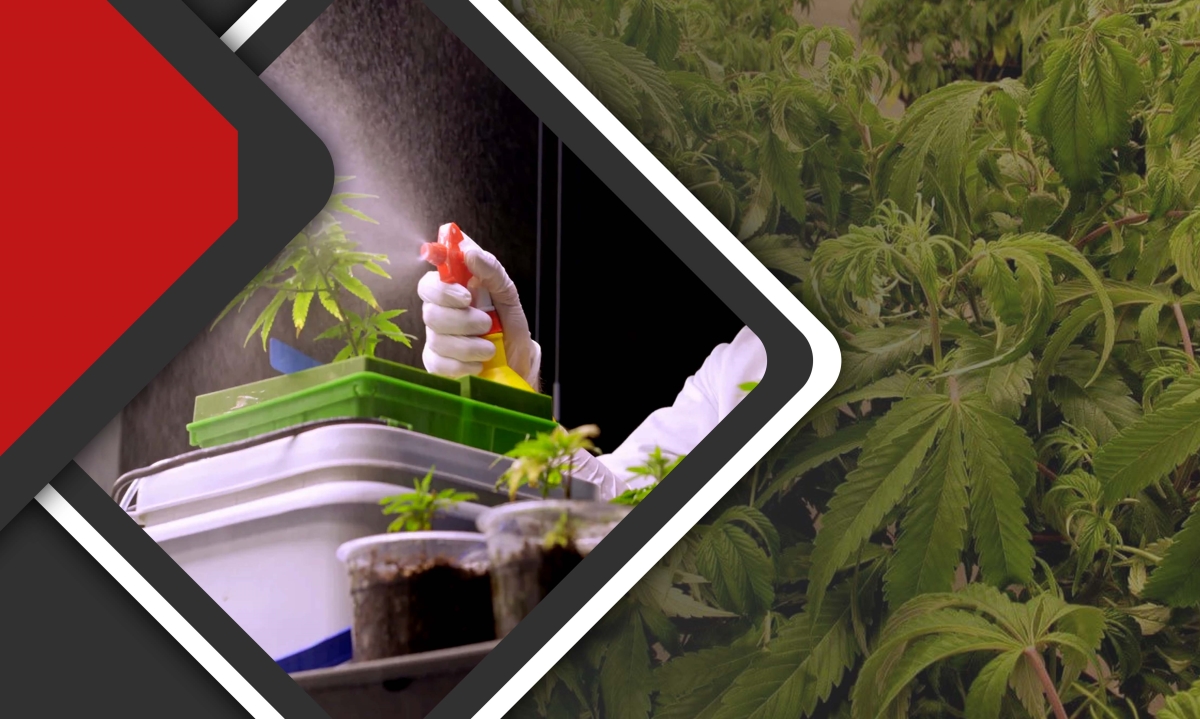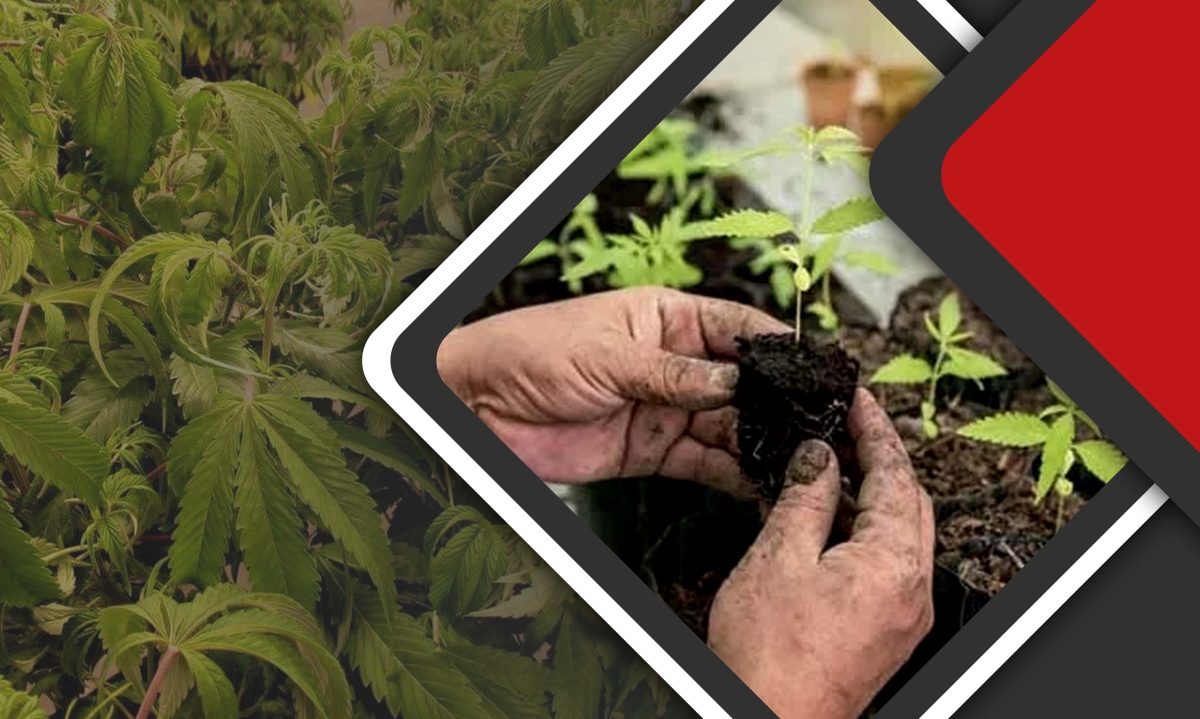During the flowering stage of cannabis growth, proper care and attention are crucial for achieving optimal yields and quality buds. However, one common mistake that growers often make is overwatering their plants. In this article, we’ll delve into the consequences of overwatering during flowering stage and provide tips on how to avoid this detrimental practice.
Table Of Contents
Overwatering Cannabis Plants
Effects of Overwatering on Flowering Cannabis Plants
Preventing Overwatering During the Flowering Stage
Overwatered Weed Plant vs Underwatered Weed Plants
Can overwatering affect bud development during flowering?
How often do you need to water your plants?
Conclusion
Frequently Asked Questions
Overwatering Cannabis Plants
Overwatering plants can lead to root suffocation, nutrient imbalances, reduced flowering potential, and increased disease risk. It deprives roots of oxygen, hinders nutrient uptake, disrupts hormonal balance, and creates a breeding ground for pathogens like root rot. To prevent overwatering, monitor soil moisture, adjust watering frequency, optimize drainage, and practice gradual watering techniques. By avoiding excess water during critical growth stages, such as flowering, growers can maintain plant health and maximize yields. Remember, moderation is key to nurturing thriving plants.
Effects of Overwatering on Flowering Cannabis Plants
- Root Suffocation
Overwatering can lead to waterlogged soil, depriving the roots of essential oxygen. As a result, the roots suffocate, hindering nutrient uptake and stunting overall plant growth. - Nutrient Imbalance
Excessive watering flushes away vital nutrients present in the soil, leading to nutrient imbalances within the plant. This imbalance can manifest as nutrient deficiencies or toxicities, affecting the plant’s health and productivity. - Reduced Flowering Potential
Overwatering during the flowering stage can disrupt the plant’s hormonal balance, affecting its ability to produce robust flowers. This may result in smaller yields and diminished potency of the harvested buds. - Increased Risk of Disease
Waterlogged soil creates a favorable environment for the proliferation of harmful pathogens such as root rot and fungal diseases. Overwatered plants are more susceptible to these infections, further compromising their health and vitality.
It’s essential to note that viable cannabis seeds will have a characteristic tiger-striped pattern on their shell. This pattern indicates that the seed is mature and has the potential to germinate successfully.
Preventing Overwatering During the Flowering Stage
- Monitor Soil Moisture
Use a moisture meter or perform the finger test regularly to assess the moisture level of the soil. Water only when the top inch of the soil feels dry to the touch, ensuring proper hydration without excess. - Adjust Watering Frequency
As cannabis plants transition into the flowering stage, their water requirements may change. Adjust the watering frequency accordingly, allowing the soil to partially dry out between watering sessions. - Optimize Drainage
Ensure that your pots or growing containers have adequate drainage holes to allow excess water to escape freely. Use well-draining soil mixes to prevent water accumulation and promote healthy root growth. - Practice Watering Techniques
Instead of drenching the soil with water, adopt a gradual watering approach. Water the plants evenly, allowing the water to penetrate deep into the root zone without causing waterlogging.
Overwatered Weed Plant vs Underwatered Weed Plants
Overwatered and underwatered weed plants present contrasting challenges and symptoms, each with its own set of consequences for plant health and growth. Overwatered plants suffer from waterlogged soil, leading to root suffocation, nutrient leaching, and increased susceptibility to diseases like root rot. Symptoms include drooping leaves, yellowing, and wilting due to the lack of oxygen reaching the roots.
Underwater weed plants can stunt growth, reduce yields, and compromise plant health. Insufficient water deprives roots of essential hydration, hindering nutrient uptake and metabolic processes. As a result, plants may exhibit wilting, yellowing leaves, and slowed growth. Underwatered plants experience dehydration, resulting in wilted, dry, and crispy leaves as the plant struggles to draw water from the soil. To prevent underwatering, monitor soil moisture levels regularly and water plants when the top inch of soil feels dry. Ensure thorough watering to reach the entire root zone, promoting healthy growth and development. By providing adequate hydration, growers can support robust weed plants with optimal yields and quality buds.
Can overwatering affect bud development during flowering?
The answer is Yes, overwatering can impact bud development during the flowering stage. Excessive moisture in the soil can lead to oxygen deprivation in the root zone, hindering nutrient uptake and impeding overall plant health. This stress response can result in diminished flower production, smaller buds, and lower potency.
Furthermore, overwatering slows bud development by raising the possibility of fungal infections including powdery mildew and root rot. Enough water management, which involves letting the soil dry out in between irrigations, is essential to optimum nutrient uptake, healthy roots, and healthy bud development and quality during the flowering stage.
How often do you need to water your plants?
When it comes to watering your plants, the frequency largely depends on various factors such as the type of plant, soil condition, climate, and season. Generally, most plants require watering when the top layer of soil feels dry to the touch. However, it’s essential to avoid overwatering as it can lead to root rot and other issues. A good rule of thumb is to water deeply but infrequently, allowing the roots to access water deeply within the soil. Additionally, monitoring your plants regularly and adjusting watering schedules accordingly is crucial for maintaining their health and vitality.
Conclusion
Overwatering during the flowering stage poses significant risks to the health and productivity of cannabis plants. By understanding the effects of overwatering and implementing preventive measures, growers can optimize their cultivation practices and maximize the potential of their flowering crops. Remember, moderation is key when it comes to watering cannabis plants, especially during crucial growth stages like flowering.
Frequently Asked Questions
1. Should you water more or less during flowering?
During flowering, plants often require more water due to increased growth and nutrient uptake. However, it’s crucial to avoid overwatering as it can lead to issues like mold or root rot. Monitor soil moisture carefully, adjusting watering frequency to ensure plants receive adequate hydration without waterlogged conditions.
2. How do you know if a plant is overwatered?
Overwatering symptoms include yellowing or wilting leaves, soggy soil, mold growth, and root rot. The soil may feel constantly damp, and the plant’s growth may slow or become stunted. Additionally, overwatered plants may develop a foul odor due to the decomposition of roots in waterlogged soil.
3. What should I do if I suspect my plants are overwatered during flowering?
Allow the soil to dry out before watering again. Improve drainage by repotting into well-draining soil and ensuring proper airflow around the plants.
4. How can I prevent overwatering during the flowering stage?
Use pots with drainage holes, water plants only when necessary, avoid watering foliage, and monitor soil moisture regularly to prevent overwatering and ensure healthy flowering.
5. How often should I water my weed plants to avoid under watering?
Water your weed plants when the top inch of soil feels dry to the touch. Depending on factors like plant size, pot size, and environmental conditions, this typically ranges from every 2-3 days. Adjust watering frequency as needed to maintain optimal soil moisture and prevent under watering.






